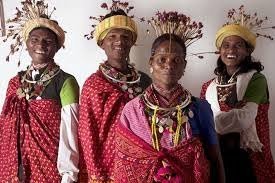The Baiga tribes, dwelling on the fringes of Madhya Pradesh and Chhattisgarh in central India, epitomize the harsh realities of isolation and deprivation. Classified under the Particularly Vulnerable Tribal Groups (PVTGs), the Baigas lead a life marked by extreme poverty and alienation from mainstream society, struggling to adapt to the world beyond their ancestral forests.
A Glimpse into the Baiga World
The Baigas are semi-nomadic people historically untouched by education and development. Their original language has faded, replaced by the local dialect. First documented by the British in Dindori district, the Baigas were found living in remote, dense jungles. Over the past two centuries, their migration to village fringes has been a tale of cultural erosion and neglect.
Social Structure and Subcastes
The Baiga community is divided into several subcastes: the Binjhwars (Gond Baigas), the Bharotiyas, the Nahads (Langotias or Narotiyas), Rai Bhaina, and Kadh Bhaina. Each subcaste has unique characteristics and socio-economic conditions. The Nahads, for instance, remain semi-nomadic and the most isolated, while the Bharotiyas are more integrated, showcasing their culture to tourists at the Kanha National Park. The Binjhwars, meanwhile, have assimilated with the Gond tribe.
Cultural Richness Amidst Struggle
Despite their hardships, the Baigas maintain a rich cultural heritage. Their traditional dances and colorful attire captivate onlookers. However, this cultural display often serves as mere entertainment for outsiders rather than a genuine appreciation of their heritage.
Government Schemes and Their Pitfalls
Numerous government schemes aim to uplift the Baiga community, yet many fail to address their actual needs. For example, a sewing machine given to a Baiga youth was practically useless in a community that barely requires tailored clothing. This misalignment highlights a broader issue: while significant funds are allocated, the impact remains minimal due to mismatched priorities and corruption.
Agricultural Practices and Challenges
Traditionally, the Baigas practiced bewar (slash and burn agriculture), avoiding plowing the earth, which they considered akin to plowing the breast of Mother Earth. Nowadays, their semi-nomadic lifestyle and lack of land make farming challenging. Many Baigas, particularly the Nahads, rely on bamboo crafting and forest produce for survival.
Community Dynamics and Alcoholism
The Baiga community faces social challenges, including widespread alcoholism and polygamy. Their villages, often located in inaccessible areas without roads or electricity, further isolate them from developmental opportunities. The Baigas’ hand-to-mouth existence is compounded by their marginalized status within the broader societal hierarchy, often looked down upon by more dominant tribes like the Gonds.
The Demographic Reality
According to the 1981 Census, the Baiga population stood at approximately 248,949, though inaccuracies likely persist due to their classification issues. The community prefers nuclear families, and children marry early, moving out soon after. Despite high mortality rates, it’s not uncommon to find elderly Baiga couples living alone in remote corners of villages.
Religious Beliefs and Festivals
The Baigas worship Bada Deo and Mara Deo, gods believed to reside in trees and outside homes, respectively. These deities are central to their spiritual life, with specific rituals and prohibitions surrounding their worship. Traditional festivals like Holi, Diwali, and Pola play significant roles, blending indigenous practices with adopted customs.
Grassroots Mobilization Efforts
Efforts to mobilize the Baiga community for better living conditions and rights have seen mixed success. Initiatives like Community Based Theatre (CBT) aimed to empower them through creative expression. However, persistent issues like alcoholism and disinterest often hinder progress. Noteworthy successes include the construction of houses under the Indira Awas Yojana and agricultural interventions that have provided some relief.
A Path Forward
The journey of the Baiga tribes is emblematic of the struggles faced by many indigenous communities in India. While their rich cultural heritage offers a glimmer of hope, significant challenges remain. To truly uplift the Baigas, a nuanced understanding of their needs and a committed, empathetic approach are essential. The path forward lies in genuine community engagement, tailored development programs, and the preservation of their unique cultural identity.


